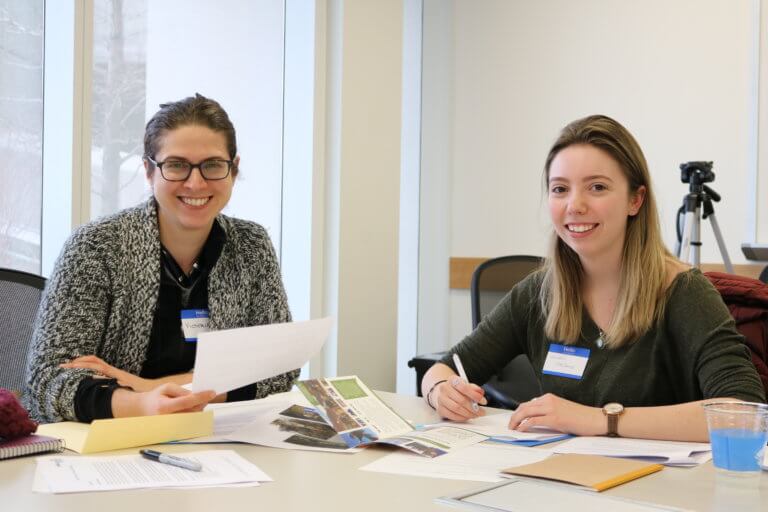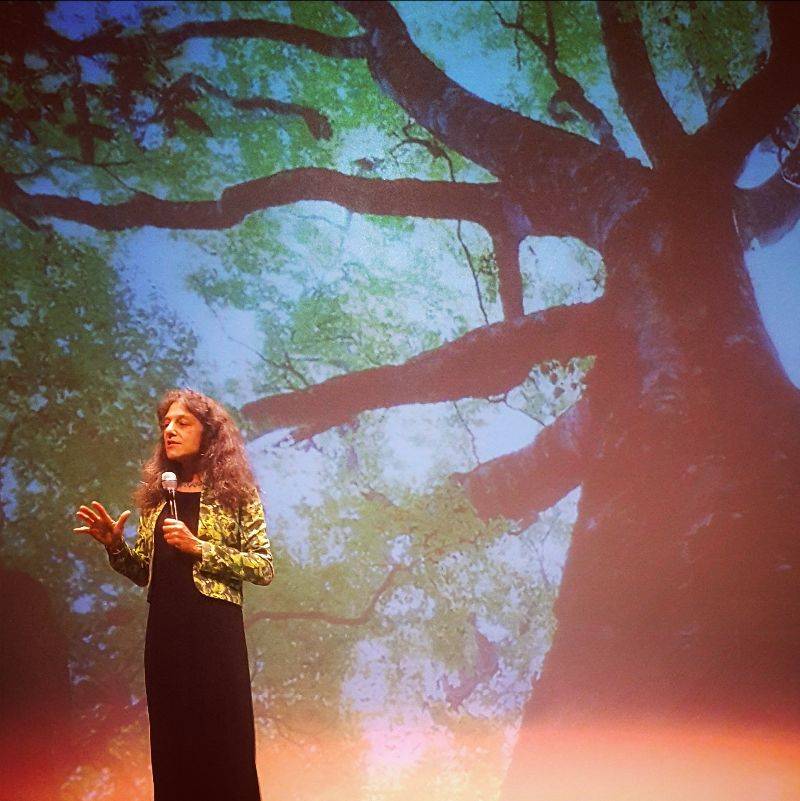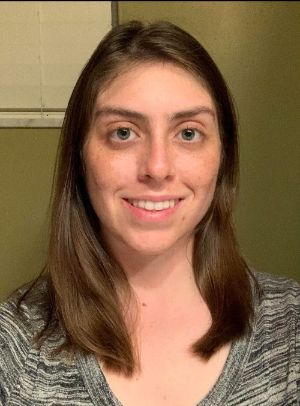Winter 2022 Newsletter

Letter From STEMAP Team
Dear STEM Ambassadors and Community Partners,
STEMAP has had a very busy winter! STEMAP staff have launched trainings for another cohort, with engagement activities happening later this spring and early summer. In addition, STEMAP offered another Broader Impacts workshop with the Research Education office, and has consulted with a number of researchers on their own Broader Impacts interests. We will be leading another one-day workshop later this spring.
STEMAP training at one of our first-ever satellite sites at Michigan State University concluded with a great reflection meeting. You can read about projects from two members of that cohort in the Reflection section below.
Finally, STEMAP is hiring a new program coordinator! You can find more information about the job listing in the article below. We are hoping to hire by early April, and appreciate you sharing this information with anyone who may be interested.
We are grateful for your continued support for public engagement of science and STEMAP’s work!
Nalini M. Nadkarni
Director, STEM Ambassador Program
Andrew George
Program Manager
Meg Young
Program Coordinator
STEMAP Spring Cohort Underway
The Spring 2022 cohort began training in January with 16 members from ten different departments across the University of Utah. Members met in an online setting for the first workshops, meeting for in-person sessions about designing and implementing public engagement at the end of February.
Ambassadors are now working with their identified communities to carry out engagement activities over the coming months. We are so pleased by their progress and successes, and we look forward to highlighting their projects in coming months!
STEMAP Director Hosts New Podcast

Nalini Nadkarni, the Director of the STEM Ambassador Program, has taken a step toward communicating diverse scientific topics by hosting a weekly science radio talk show called “UnDisciplined.” Each week, UnDisciplined takes a dive into the lives of researchers and explorers working across a diverse array of scientific fields. It is broadcast to a wide audience in urban and rural Utah via Utah Public Radio on Thursdays at 10:30 am.
The program highlights the interconnected and collaborative nature of scientific inquiry, and highlights the need for interdisciplinary approaches to understanding and resolving scientific questions by bringing in approaches of different disciplines.
Each week, Nadkarni finds an interesting article in any area of science, and the radio program producer sets up a time for an interview and works out logistics so that the host and interviewee can enjoy a free-wheeling discussion about that week’s science topic – not only about the question posed and results produced, but also about the interactions of collaborators, the challenges of lab work or fieldwork, and what inspired the study to begin with.
You can listen to episodes on Utah Public radio or get access to archived podcasts at https://www.upr.org/show/undisciplined
Join us!
STEMAP is Hiring!
The STEM Ambassador Program is looking for a program coordinator! This full-time position will report to our Program Manager, Andrew George. If you are looking for a professional role in the field of science communication and public engagement of science, consider applying! We appreciate you sharing the listing with friends and colleagues who may be interested as well. You can find the full job description and instructions for applying here: https://utah.peopleadmin.com/postings/130365.
STEM Community Alliance Program Recruiting Speakers

The STEM Community Alliance Program (STEMCAP) provides science activities, workshops and conservation projects in a number of Youth-In-Custody facilities around the Salt Lake area, and is recruiting interested scientists to participate. Workshops have included topics including electrochemistry, wildlife management, botany, art and science, engineering, and more.
E-mail Laura George, the STEMCAP Program Manager, if you would like more information. You can apply to present with STEMCAP on the program website.
STEMAP Partners with Office of Research Education
The STEM Ambassador Program ran a second one-day Broader Impacts workshop through the Office of Research Education (REd), giving an introduction to BI requirements and values for participants in the workshop. Program Director Nalini Nadkarni discussed the need for meaningful BI in National Science Foundation grant proposals. Following this, STEMAP staff demonstrated the connection exercise from STEMAP training.
Following this workshop, STEMAP is pleased to offer one-on-one consultation opportunities for researchers looking for assistance with Broader Impacts sections of their grant proposals, which can be scheduled here. STEMAP will also be offering another one-day workshop with REd soon.
STEM Ambassador Reflections
The following articles were written by STEM Ambassadors at Michigan State University about their engagement experiences. This activity was carried out according to institutional guidelines on in-person interaction. Please follow the heath guidance of your local institutions for scheduling public engagement.
Elizabeth Rubino’s Life Imitates Physics at a Retirement Center

As a physicist working at a national nuclear physics lab, I feel that my work tends to have some negative connotations, such as nuclear weapons and being complicated and unapproachable. However, this is not the reality of all nuclear physics research, and I feel it is important to make people aware of how exciting and beneficial to society our research is.
Physics outreach tends to be focused on disseminating interesting and fun information about physics topics, so the idea of connecting and having an open discussion about physics was entirely new for me. I was a bit hesitant, not knowing what to expect, especially since it is fairly common for me to hear from adults that they misunderstand or even don’t like physics when I share my background. Regardless, I opted to participate in STEMAP to learn how to openly communicate about science with the public.
I opted to pursue an activity at the Burcham Hills retirement center largely based on the connection between the vastness of physics and the vastness of people’s lives. The name of the activity I carried out there was “Life Imitates Physics,” inspired by the saying “life imitates art.” The idea was to relate how physics developments affect our lives and history. In the activity, I related physics topics to events happening in the world around the time of their discoveries.
I began to worry that nobody would attend the activity titled “Life Imitates Physics” as it directly contained the frightening word “physics,” but was pleasantly surprised to receive a group of about ten people. We started the afternoon with introductions about ourselves, allowing people to share to their comfort levels. Upon beginning, I realized that encouraging discussions would be a bit more challenging than I had envisioned. I received some positive feedback from the participants, but decided that the next activity would need to be much more discussion-based.
Moving forward, I decided it was best to ask the group what they are interested in learning about. For the second session, I introduced the topic of artificial intelligence and how it relates to physics. I embedded questions into the material to encourage discussion and this seemed to work much better. I also tried to reference real life examples, such as search engines using artificial intelligence to make suggestions. The discussions drastically improved this time around. Participants had input to the questions I had as well as personal anecdotes and sharing their opinions on artificial intelligence.
I rounded out with a third activity introducing nuclear physics, which is specifically what I research. I also introduced the layout of the Facility for Rare Isotope Beams on Michigan State University’s campus which is where I conduct most of my research. There was great interest and many questions on this topic. Overall, all three activities were a lot of fun and the participants seemed to really enjoy our discussions. I look forward to future opportunities to share physics knowledge.
Hailey Becker

Due to the pandemic, I spent many months isolated during my first year of graduate school. I started volunteering with the Allen Neighborhood Center (ANC) my first summer in Lansing and found joy in being around the people and serving the community. That same year, I decided to move to that part of Lansing to be more involved with the ANC. I was interested in working with children, so when in-person youth programming came back in October 2021, I jumped at the opportunity to volunteer.
My STEMAP activity took place during Take Root Garden Club at the Foster Community Center in Lansing, Michigan. Garden Club is a K-5 gardening and nutrition education program and one of the youth programs offered by ANC. Each week, members share a healthy snack and participate in lessons and activities exploring food, gardening, plants, and community.
I had never intended to bring STEM to the garden club. I know very little about gardening and my field of research is in metallurgy which isn’t exactly closely related. Nevertheless, that all changed as the garden educator, Kelsi and I made a realization: elementary schoolers are insane, especially after school. How could we engage them and keep them occupied while fulfilling their energy requirements? The answers were coloring sheets, vegetables with googly eyes, and science.
We came up with two STEM activities that could be incorporated into the basic structure of the garden club program: microscopes and liquid nitrogen ice cream. In my research, I use advanced microscope techniques to image metals and learn about their fundamental properties. I love the hidden world microscopes show us. I brought my idea to the microscope research specialist in the Composite Materials & Structures Center at MSU. He handed me a portable digital microscope and said have fun! It is also very common for materials scientists to use liquid nitrogen as a recruiting tool due to its pizazz and ability to produce delicious treats.
Activity 1: Microscope Day
As usual, the kids poured into the room, excited to learn what the food of the day was (fruit salad). They examined the mysterious object on the table. Within minutes, they were imaging fruit like pros. Since no less than 10 kids were surrounding the microscope at all times, as new kids came in, the others quickly taught them the basics and had them operating the microscope in a few minutes. It was incredible to watch. Soon their focus changed as they realized they wielded a tool to view their world through new eyes. They imaged each other’s hair, skin, fingernails, masks, the table, their shirts, and more. I knew they thought something was gross when I heard shrieking from across the room.
I also made a microscope matching game. Each image depicted a piece of fruit at the microscopic scale. The kids had to match the microscope images with macroscopic images of the same fruits. If they weren’t sure what something was, they could image their guesses under the microscope with real fruit. It was amazing to watch them use the scientific method to make educated guesses, test their hypotheses, and make conclusions.
Activity 2: Liquid Nitrogen Ice Cream
All of the ingredients were mixed and it was time for the first, highly anticipated, pour. The kids gathered around the table were told to stand back so as not to get splashed by the cold liquid. Lusting for the pour, all of them immediately held out their arms and pulled each other back several feet yelling “Get back! Get back!” I poured and as the liquid nitrogen started evaporating in a cool smoky mist, the children rushed to the table and stuck their hands in the mist (the mist is safe to touch). Kelsi stirred the mix until the mist dissipated and it was time for another pour. The children immediately grabbed each other and pulled another back so as not to delay the magical pour. I poured again. They rushed to the table. And so, this pattern repeated through the making of two batches of ice cream.
The physical response of the children to the presence of the liquid nitrogen was amazing to watch. The automatic response of children to natural phenomena can leave you speechless because it shows intuitiveness and a sense that many adults lose over time. It didn’t matter the age, race, or demeanor of the child; they all responded very similarly in the presence of the liquid nitrogen.
Reflection
When I joined the STEMAP program, I didn’t think I had much to offer. I wasn’t sure how to incorporate my scientific knowledge into the community in a meaningful way. Already volunteering with the Take Root Garden Club was a great way for me to practice scientific community engagement because I was forced to change my perspective on what community engagement can look like by blending what I felt were unrelated topics. What I learned from facilitating the engagement activities was that as a scientist, I have the privilege to see and uniquely interact with the world. I was able to share some of that world and provide a set of hands-on experiences for a group of kids who have spent the better part of their education the past few years on screens. I know the activities have stuck with them because even months later, they still bring up and make requests for another microscope day or more ice cream.
About the Blog
Discussion channel for insightful chat about our events, news, and activities.
Categories
Featured Posts
Tag Cloud
- UoG (2)
- Guam (2)
- ethnobotany (1)
- environmental policy (1)
- student immersion (1)
- engineering (1)
- Virgin Islands (1)
- USVI (2)
- lionfish (1)
- children's home (1)
- conservation (1)
- marine ecology (1)
- youth (1)
- sustainability (2)
- Utah (1)
- Arizona (1)
- Nevada (1)
- southwest (1)
- virtual (1)
- project management (1)
- training (1)
- naturalist (1)
- forest (1)
- ecosystem (1)
- Puerto Rico (1)
- Spanish (1)
- library (1)
- Huntington's (1)
- medical science (1)
- Emmanuel Ngwoke (1)
